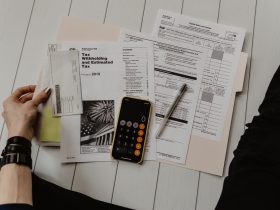An option contract gives investor a right (not obligation) to sell or buy an underlying asset at specific price before or on a certain date. An option is a kind of security just like bond or stock. It is a binding contract, which includes strictly defined terms. Visit online to learn options trading and sharpen your skills for efficient trade decisions.
Still confused? Well, here is a simple example, if you assume that the price of stock ABCD will rise from $40 to $45 in the next three months but are not willing to tie thousands of cash. You can purchase options of ABCD at $1.20 per contract. Remember, one option contract manages 100 shares. (Two options contract = 100 x 2 = 200 shares and so on). In this way, just $120 gets tied up rather than the huge amount $4,000, if you had bought 100 shares of ABCD, directly.
Understand ‘Calls’ and ‘Puts’
- ‘Calls’ and ‘Puts’ are two pillars for options applied in any kind of options strategy.
- Call option means buying a security and Put option means selling an underlying asset.
- Calls are like having long position and Puts are similar to having short position
- Call buyers hope stock price increase and Put buyers wish for stock price to fall prior option expires
- When market is bullish buy calls and in bearish conditions purchase puts to profit.
What Call and Put Allows doing?
In options market people buying options are termed as ‘holders’ and traders selling options are termed as ‘writers’. Call & Put buyers (holders) are not compelled to sell or buy whereas Call and Put sellers (writers) are obligated to sell or buy.
Understand Basic Terms
Strike price – Price at which you buy or sell the underlying stock. For calls, strike price goes above stock price and for puts price goes below stock price prior the position can be applied for profit, before expiration date.
In-the-money – For call option share price is above strike price and vice versa for put option. In this option, you can earn money.
Out-Of-The-Money – No money is earned applying this option because the strike price is either above/below the share price for call/put options.
At-the-money – It is a 50/50 scenario, if this option is opted. The strike price and share price of underlying security is same, whether you own put or call.
How Premium Price Gets Fixed?
Options of an underlying asset can be purchased, at fraction of actual stock market price. The upfront amount paid to options seller is the premium price.
Option premium prices are controlled by intrinsic value and the options time value.
Intrinsic value – Difference between stock price and strike price is Intrinsic Value. It can be in-the-money (positive) or zero (for ATM or OTM because asset’s intrinsic value is never negative)
Time value – If time left between current date and expiration date of options contract A is more than contract B then A has high time value.
Long time windows give traders more flexibility to apply their option. The risk is lowered and they are safe from getting in tight spots.
If time value is high in the start of contract period and underlying security remains ITM then the options price is towering. If option goes OTM or ATM then intrinsic value is zero. Only time value is taken into consideration and options price falls down.
As expiration date of options contract nears, time value falls, which affects option price negatively.




























